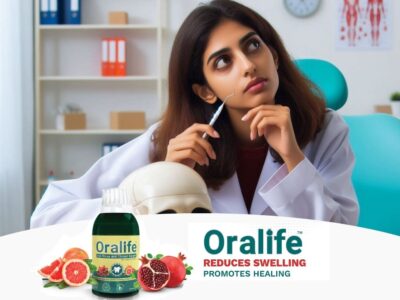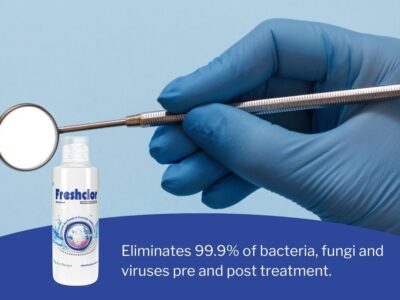Humans have five basic senses: sight, hearing, smell, taste and touch. All are important for sustainable living but in my opinion, the one who’s loss affects life the most is – sight. Blindness pushes the visually impaired into literal darkness and opens doors to a different way of living life of which the sighted are unaware. Worst case scenario is for those individuals who’ve been sighted for some part of their lives and then lost their vision to corneal diseases. Corneal diseases are among the major cause of global blindness, secondary only to cataract. Corneal transplantation is a viable treatment modality to restore vision again. Can prosthetics help in regaining sight for cases where this surgery is not indicated?
Osteo-Odonto Keratoprosthesis (OOKP), also known as ‘tooth in eye surgery’, is a unique form of artificial cornea surgery & prosthetic rehabilitation to restore the vision of patients with the most severe, end-stage forms of corneal blindness that are not amenable to corneal transplantation or other forms of surgery. OOKP is the ideal treatment for patients with end-stage inflammatory corneal diseases. A portion of tooth along with bone is used to support an optical cylinder to restore vision in such patients. It requires multidisciplinary approach involving dentists, ophthalmologists, and radiologists.
HISTORY(1)
OOKP was first described in 1963 by Professor Benedetto Strampelli, San Camillo Hospital in Rome. He had noted that gutta-percha will remain in the root canal of a tooth indefinitely, but will be rejected if implanted into soft tissues. So it would seem probable that if a polymethyl methacrylate or acrylic cylinder implant could be held in a piece of the patient’s composite bone-tooth lamina, and the whole assembly placed in a corneal envelope, the tooth and bone would form an autograft picture-frame for the acrylic, and so prevent its extrusion . Falcinelli later modified the technique in a stepwise manner in the mid 1990’s. This is now known as Modified Osteo-Odonto-Keratoprosthesis (MOOKP) and is recognised internationally as giving the best, long-term visual and retention results among all keratoprostheses, especially in a dry eye.
SELECTION CRITERIA OF PATIENT (2)
| INDICATIONS– Patients with bilateral corneal blindness resulting from – | CONTRAINDICATIONS |
| Severe end stage Stevens-Johnson syndrome/Lyell Syndrome/ trachoma | Patients who are satisfied with their level of vision /unilateral blindness |
| Ocular cicatricial pemphigoid | Children under the age of 17 |
| Chemical or thermal burns | Eyes that have no light perception |
| Perforating injuries | Evidence of phthisis |
| Severe keratitis/dry eyes | Advanced glaucoma |
| Multiple failed grafts / graft-versus-host disease | Irreparable retinal detachment |
SELECTION CRITERIA OF MUCOSAL DONOR SITE & TOOTH(2)
After intraoral examination and radiography, a mucosal donor site & tooth is selected.
- The mucosa should be normal in consistency and free from disease.
- Any site with lesions like recurrent aphthous ulceration, leukoplakia, lichen planus and oral submucous fibrosis should be avoided,
- Detrimental habits like smoking and betel nut chewing should be discontinued as it will compromise tissue quality.
Usually, buccal mucosal sites are preferred as lingual muco-periosteum is difficult to preserve.
| INCLUSION CRITERIA FOR TOOTH | EXCLUSION CRITERIA FOR TOOTH |
| Tooth should be vital | Non-vitality, |
| Should be healthiest, best-positioned, best shape & size | Previous root canal therapy |
| Should have good covering of alveolar bone | Inadequate bone investing the root |
| Should be single rooted with a long and large root | Peri-radicular pathology |
| Extraction the tooth should be along with alveolar bone | Close proximity of adjacent teeth/vital structures. |
The most suitable tooth is the maxillary canine or the maxillary premolar.
PROCEDURE (3) (4)

The MOOKP procedure is carried out in two stages, 4-5 months apart. Each stage takes 6-8 hours and in a few patients multiple surgeries are required.
Stage 1 of the surgery involves five separate procedures:
- The eye is opened up and the entire inner surface of the eyelids, corneal surface and all scar tissue is removed.
- Inner mucosal lining of the cheek is transplanted onto the new surface of the eye.
- A canine or premolar tooth and part of the adjacent bone and ligaments are removed.
- A bolt-shaped structure is fashioned from the tooth-bone complex which is fitted with a plastic optical cylinder.
- The tooth-bone-cylinder complex is implanted into the patient’s cheek to grow a new blood supply.

Stage 2 (about 4 months later) involves two separate procedures:
- The cheek mucosal lining over the eye is opened and the inner contents of the eye are removed
- The tooth-bone-cylinder complex is removed from the cheek and inserted into the eye, the mucosal cheek lining is replaced over the implant.

At the end of the procedure, light can now enter through the plastic cylinder, and the patient is able to see through this cylinder with good vision.

B. Post-operative view with OOKP in place. Credits – Reddy, Tajjunisah
EXPERT OPINION
Dr. Neha Shrirao Mehta, Ophthalmologist & Consultant Orbital, Oculoplastic Surgeon, Pune, India says, “MOOKP is an excellent option for bilateral end stage cicatricial ocular surface diseases. However, patient selection is very important as those who have a MOOKP in situ have various restrictions in their lifestyle. I have seen patients with MOOKP happy and independent and leading a fulfilling life. But a small mistake or carelessness can lead to infection and blindness is mostly inevitable in these cases.”
Dr. Anuraag Singh, Ophthalmologist & Consultant Vitreo-Retina surgeon, Amritsar, India says, “MOOKP is helping patients attain ambulatory vision so that they are not dependent on others for the rest of their life. However, life-long close follow-up with their ophthalmologist is of extreme importance in such cases. Elderly patients should be monitored for any age related macular degeneration, which, if untreated, can compromise the visual prognosis.”
CONCLUSION
The brilliance of using a tooth as an eye implant should inspire future interprofessional approaches to ophthalmic practice to provide the best care for patients. OOKP is a perfect example of innovative dental and ophthalmic blending.
REFERENCES
- Falcinelli G, Barogi G, Taloni M. Osteoodontokeratoprosthesis: present experience and future prospects. Refract Corneal Surg1993; 9: 193–194.
- Sarode GS, Sarode SC, Makhasana JS (2011) Osteo-odontokeratoplasty: A Review. J Clinic Experiment Ophthalmol 2:188.
- Ricci R, Pecorella I, Ciardi A, Della Rocca C, Di Tondo U, Marchi V (April 1992). “Strampelli’s osteo-odonto-keratoprosthesis. Clinical and histological long-term features of three prostheses”. Br J Ophthalmol. 76 (4): 232l–4
- Reddy, Tajjunisah Osteo-odonto keratoprosthesis in Stevens-Johnson syndrome: a case report Int J Ophthalmol. 2011; 4(2): 212–215.

















Comments